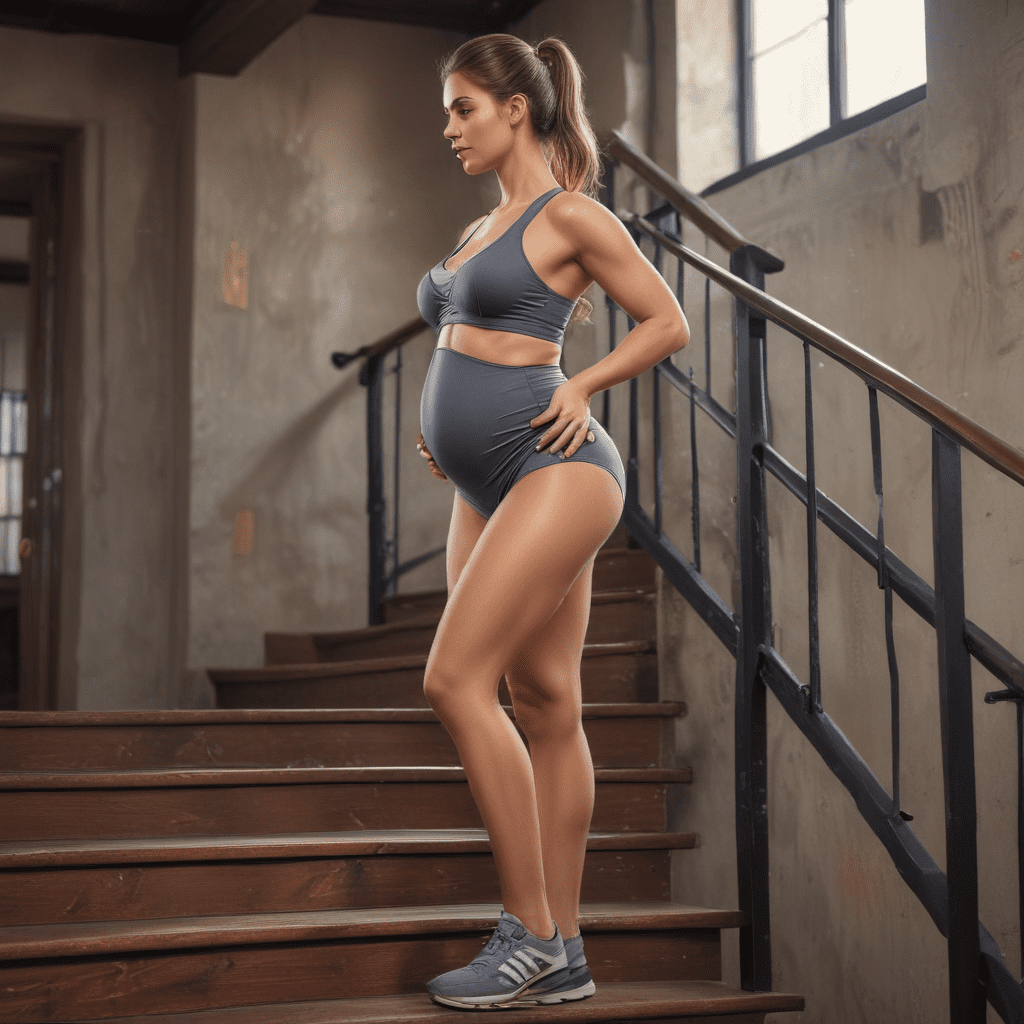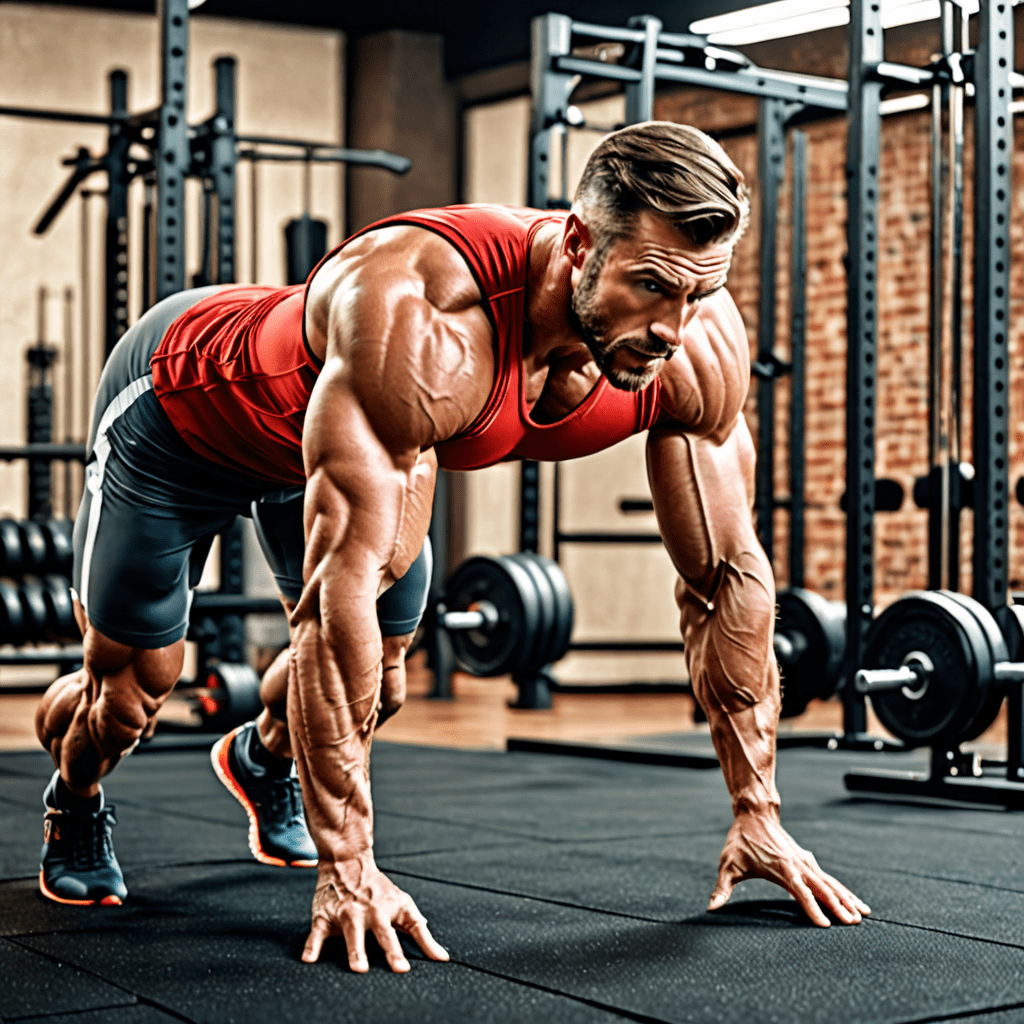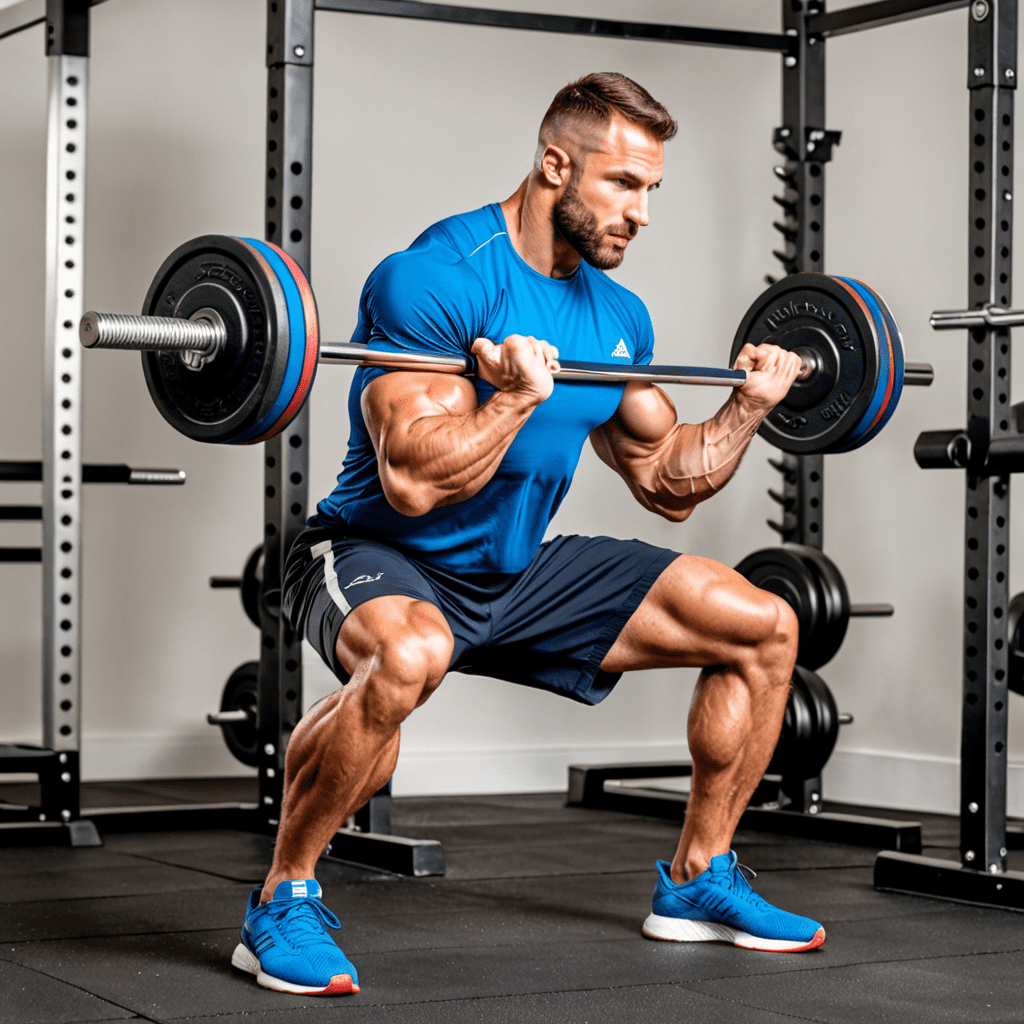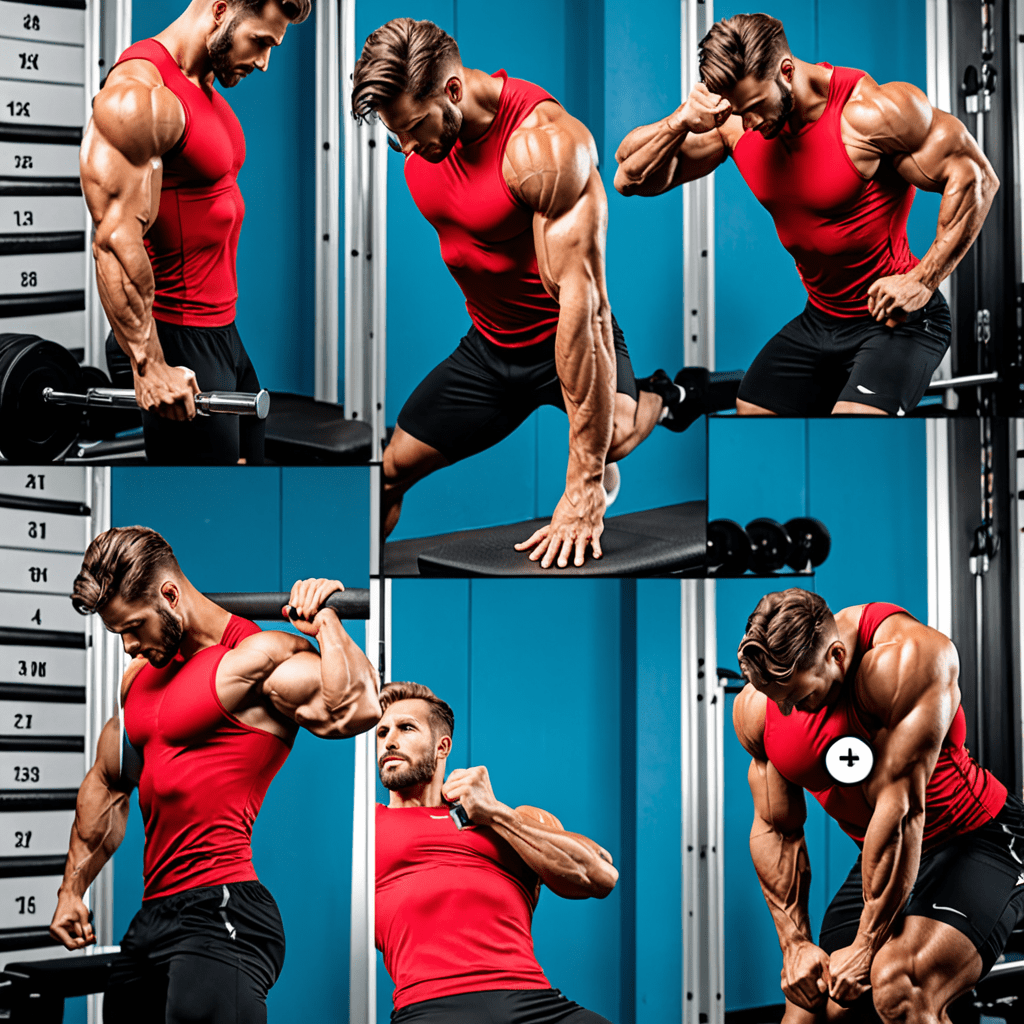Introduction
Pregnancy is a beautiful and transformative time in a woman's life. It's also a period of significant physical changes, including weight gain, hormonal fluctuations, and shifting balance. Staying active during pregnancy is crucial for both the mother's and baby's health, and stair climber workouts offer a unique and effective way to build lower body strength while minimizing impact on the joints.
Benefits of Stair Climber Workouts during Pregnancy
Stair climber workouts during pregnancy offer a plethora of benefits for both mother and baby. These include:
- Improved cardiovascular health: Stair climbing elevates your heart rate, strengthens your heart muscle, and improves blood circulation, which is essential for delivering oxygen and nutrients to your baby.
- Enhanced lower body strength: Stair climbing works multiple muscle groups in your legs, including your glutes, quads, hamstrings, and calves, preparing you for the demands of childbirth and postpartum recovery.
- Reduced risk of gestational diabetes: Regular exercise like stair climbing helps regulate blood sugar levels, lowering the risk of developing gestational diabetes during pregnancy.
- Improved mood and energy levels: Exercise releases endorphins, which have mood-boosting and energizing effects, helping combat fatigue and improve your overall well-being.
- Easier labor and delivery: Strong leg muscles can make labor and delivery more efficient and less taxing on your body.
Safety Considerations
While stair climber workouts are generally safe for pregnant women, it's crucial to prioritize safety and listen to your body. Some important safety considerations include:
- Clearance from your doctor: Always consult your doctor before starting any new exercise program during pregnancy. They can advise you on the appropriate intensity and duration of your workouts and ensure it's safe for you and your baby.
- Listen to your body: Pay close attention to how you feel during your workout. If you experience any pain, dizziness, shortness of breath, or other discomfort, stop immediately and rest.
- Stay hydrated: Drink plenty of water before, during, and after your workout to stay hydrated and prevent overheating.
- Wear supportive shoes: Choose comfortable, supportive shoes with good traction to prevent falls.
- Use handrails: Hold onto the handrails for added stability, especially in the later stages of pregnancy.
- Avoid overexertion: Start with short workouts and gradually increase the duration and intensity as you get stronger.
- Modify exercises as needed: Don't hesitate to modify exercises to suit your comfort level and physical limitations.
Choosing the Right Stair Climber
When choosing a stair climber for your pregnancy workouts, consider the following factors:
- Adjustability: Look for a stair climber with adjustable incline and resistance levels to allow for progression as your fitness improves.
- Stability: Choose a sturdy and well-balanced machine to prevent wobbling or tipping.
- Comfort: Opt for a machine with comfortable foot pedals and handrails.
- User-friendly controls: Make sure the controls are easy to use and adjust while exercising.
- Safety features: Some stair climbers offer additional safety features like heart rate monitors and emergency stop buttons.
Starting Your Stair Climber Workout
Once you've consulted your doctor and chosen the right stair climber, you're ready to start your workout. Here's a simple beginner's routine:
- Warm-up: Start with a 5-10 minute warm-up, such as walking or light jogging on the spot.
- Workout: Set the incline to a low level and resistance to a comfortable setting. Climb for 10-15 minutes, maintaining a steady pace.
- Cool-down: Gradually reduce the incline and resistance, and finish with 5-10 minutes of static stretches.
As you get stronger, you can gradually increase the duration, incline, and resistance of your workouts. Remember to listen to your body and take breaks when needed. In the next section, we'll explore specific exercises you can perform on the stair climber to target different lower body muscle groups.
Building Strength in the Glutes
The glutes, or gluteal muscles, are a group of three muscles located in the buttocks: the gluteus maximus, medius, and minimus. These muscles play a crucial role in hip extension, stability, and power, making them essential for daily activities like walking, climbing stairs, and lifting objects.
To build strength in the glutes on the stair climber, focus on exercises that involve hip extension and glute activation. Here are a few examples:
1. Stair Climber Lunges: Step onto the stair climber with one foot and lower your body until your front knee is bent at a 90-degree angle and your back knee hovers just above the platform. Push through your front heel to return to the starting position. Repeat with the other leg.
2. Side Step-Ups: Stand with your feet hip-width apart on the stair climber. Step to the side onto the platform, leading with one foot. Bring your other foot up to meet the first, then step back down to the starting position. Repeat on both sides.
3. High Knees: As you climb the stairs, bring your knees up high towards your chest, engaging your core and glutes. Maintain a fast pace and a slight forward lean.
Targeting the Quadriceps and Hamstrings
The quadriceps and hamstrings are two large muscle groups located on the front and back of the thighs, respectively. The quadriceps extend the knee joint, while the hamstrings flex the knee joint.
To target the quadriceps and hamstrings on the stair climber, focus on exercises that involve knee flexion and extension. Here are a few examples:
1. High Step-Ups: Place your foot on the second or third step of the stair climber and step up, extending your knee fully. Step back down with control. Repeat with the other leg.
2. Slow Crunches: As you climb the stairs, engage your core and slowly lift your knees towards your chest, focusing on the contraction in your quads. Lower your legs back down with control.
3. Squat Jumps: With your feet hip-width apart on the stair climber platform, lower your body into a squat position. Explosively jump up, extending your legs fully. Land softly and repeat.
Improving Calf Muscle Strength
The calf muscles, located in the lower leg, play a crucial role in ankle plantarflexion, allowing you to push off the ground when walking, running, and jumping.
To improve calf muscle strength on the stair climber, focus on exercises that involve calf raises. Here are a few examples:
1. Stair Climber Calf Raises: Stand on the balls of your feet on the stair climber platform, with your heels hanging off the edge. Push through the balls of your feet to raise your heels as high as possible. Slowly lower your heels back down and repeat.
2. Step-Down Calf Raises: Step down onto a lower step of the stair climber, allowing your heels to hang off the edge. Push through the balls of your feet to raise your heels as high as possible. Slowly lower your heels back down and repeat.
3. Jump Rope: While not directly on the stair climber, incorporating jump rope into your workout routine is an excellent way to improve calf strength and endurance.
Progression and Intensity
As you get stronger and more comfortable with the stair climber, you can gradually increase the intensity and duration of your workouts. Here are a few ways to progress:
- Increase the incline or resistance: This will make the workout more challenging and help you build strength faster.
- Increase the duration of your workouts: Start with shorter workouts and gradually add more time as you get stronger.
- Add more variety to your workouts: Try different exercises, intervals, and tempos to keep things interesting and challenge your muscles in new ways.
Remember to listen to your body and take rest days when needed. Overtraining can lead to injuries, so it's important to find a balance between challenging yourself and giving your body time to recover.
General Exercise Tips for Pregnant Women
Here are some additional exercise tips to keep in mind during pregnancy:
- Stay hydrated: Drink plenty of water before, during, and after your workout to stay hydrated and prevent overheating.
- Wear comfortable clothing: Choose loose-fitting, breathable clothing that allows your body to move freely.
- Avoid lying on your back: As your pregnancy progresses, avoid lying on your back for extended periods, as this can put pressure on your vena cava and reduce blood flow to your baby.
- Listen to your body: Pay attention to how you feel during your workout. If you experience any pain, dizziness, shortness of breath, or other discomfort, stop immediately and rest.
- Warm up and cool down: Always warm up before your workout and cool down afterward to prevent injuries.
- Modify exercises as needed: Don't hesitate to modify exercises to suit your comfort level and physical limitations.
- Don't overdo it: Start with short workouts and gradually increase the duration and intensity as you get stronger.
Conclusion
Stair climber workouts can be an excellent way for pregnant women to build lower body strength while minimizing impact on the joints. By following the safety guidelines, choosing the right machine, and starting with a beginner's routine, you can safely and effectively incorporate stair climbers into your pregnancy fitness plan. Remember to listen to your body, progress gradually, and always consult your doctor before starting any new exercise program.
FAQ
Is it safe to use a stair climber during the first trimester of pregnancy?
Yes, it is generally safe to use a stair climber during the first trimester of pregnancy, as long as you have your doctor's clearance and follow the safety guidelines. However, it's important to start with shorter workouts and lower intensity levels, and gradually increase as you get stronger.
Can I use a stair climber if I have back pain during pregnancy?
If you experience back pain during pregnancy, it's important to consult your doctor before using a stair climber. They can advise you on safe exercises and modifications that will not aggravate your pain.
What are some other good exercises to do during pregnancy?
Other good exercises for pregnant women include walking, swimming, yoga, Pilates, and strength training using light weights or resistance bands. Always consult your doctor before starting any new exercise program.



